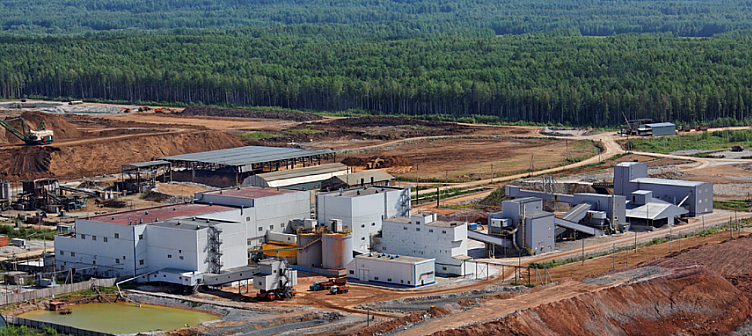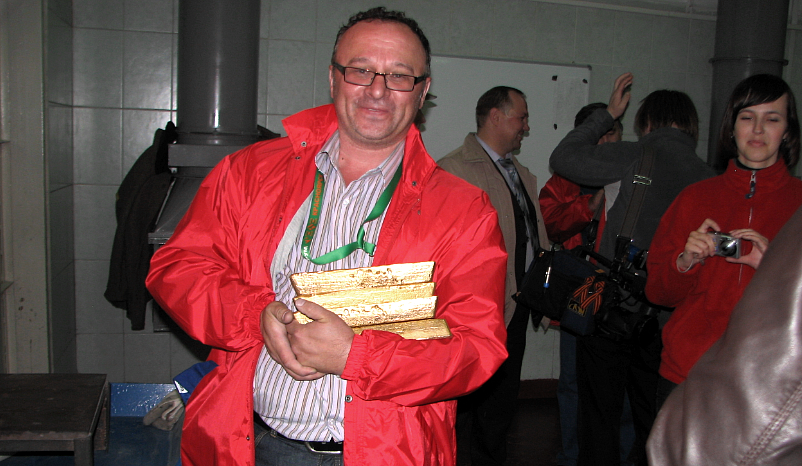Accredited InvestorsAltcoinAnatoli UnitskyAnti-Money Laundering (AML) In CryptoAPIArbitrageArtCoin TokenArticle DirectoryASICAuction Terminology GlossaryBasics of Stock Market InvestingBear MarketBest Crypto Payment Provider In the WorldBitcoinBlockchainBlockchain ConfirmationBlockchain Consensus MechanismBlockchain ForkBlockchain GlossaryBored Ape Yacht ClubBuild a Business That OutperformsBull MarketBuying SkyWay SharesByzantine Fault Tolerance (BFT) ExplainedCasascius CoinCentral Bank Digital Currency (CBDC)Centralized Crypto ExchangeCoinCoinsetCold WalletCollateralCommodity Futures Trading Commission (CFTC)Cross-Chain TechnologyCRUCrypto ExchangeCrypto GlossaryCrypto JokesCrypto Terms to KnowCrypto TickerCryptocurrencyCryptographyCryptojackingCryptounit BlockchainCryptounit GlossaryCryptounit ProgramdApp (Decentralized Application)Dead CoinDecentralized Exchange (DEX)Decentralized Finance (DeFi)Difference Between Bitcoin and EthereumDifferent Ways of Investing MoneyDigital CurrencyDistributed LedgerDo Your Own Research (DYOR)Dollar Cost Averaging (DCA)Dow Jones Industrial Average (DJIA)EncryptionERC-20ERC-721EthereumEvoScentFear Of Missing Out (FOMO)Fear, Uncertainty and Doubt (FUD)Fiat MoneyFNT Fintech CompanyGenesis BlockGlobal Unit PayGlossary of Banking TermsGlossary of Business TermsGlossary of Financial TermsHalvingHODLHot WalletHow Do I Start InvestingHow Rich is Satoshi Nakamoto?How to Create a BlockchainHow to Find Private InvestorsHow to Get Into FintechHow to Program Smart ContractsI Am Thrilled to Be a Part of This Global ProjectInitial Coin Offering (ICO)Initial Public Offering (IPO)Initial Token Offering (ITO)Innovation Basalt TechnologyInnovative Transportation TechnologiesInternational Bank Account Number (IBAN)Investing in Gold Mining StocksInvesting in Gold MiningJagerJoy of Missing Out (JOMO)Know Your Customer (KYC)LedgerLiquidity in CryptocurrencyMaker and Taker Fees in Crypto TradingMarket Capitalization (Market Cap)Meme CoinMetal Credit CardMetaMaskMillenials Now Have Access to Generational WealthMy Best Investment EverNew Digital EvolutionNFT GlossaryOff-Chain TransactionsOn-Chain TransactionsOpen Edition NFTPeer-to-Peer (P2P)Personal Loan GlossaryProbably the Best STO on the MarketProof of Stake (PoS)Real Estate Glossary of TermsReal Estate Investing GlossaryRebase TokenSecurities and Exchange Commission (SEC)Security Token ExchangesSecurity Token Offering (STO)Soulbound Decentralized Identities for Security TokensSoulbound ID Launch by Stobox Proves a SuccessSoulbound TokensStoboxStock Market GlossaryTestimonialsTether Platform and Token (USDT)UnitEx ExchangeUnitsky String TechnologiesUNTBUSDUValidatorWe Started Investing When We Were 25What are Blue Chip NFT?What are Blue Chip Stocks?What are Crypto Assets?What are Crypto Smart Contracts?What are CryptoPunks NFT?What are Digital Assets?What are Digital Collectibles?What are Gas Fees?What are Gas Wars?What are Hashmasks?What are Non Fungible Tokens?What are Non-Sufficient Funds (NSF)?What are Soulbound Tokens (SBT)?What are Stablecoins in Crypto?What are Transactions Per Second (TPS)?What are Utility NFTs?What are Utility Tokens?What Does Burning Crypto Mean?What Does Diamond Hands Mean?What Does Paper Hands Mean?What Does To The Moon Mean?What Does WAGMI Mean?What Happened to Satoshi Nakamoto?What is a 51% Attack?What is a Baby Boomer?What is a Backlink?What is a Banner?What is a Barcode?What is a Bid-Ask Spread in Crypto?What is a Block in Blockchain?What is a Block Reward?What is a Blockchain Address?What is a Blockchain Node?What is a Blockchain Oracle?What is a Blog?What is a Bond?What is a Bot?What is a Broker?What is a Business Accelerator?What is a Cash Cow?What is a Commercial Bank?What is a Commodity?What is a Con?What is a Credit?What is a Credit Limit?What is a Credit Rating?What is a Crypto Airdrop?What is a Crypto Bridge?What is a Crypto Scam?What is a Crypto Token?What is a Crypto Wallet?What is a Crypto Whale?What is a Crypto Winter?What is a Cryptocurrency Public Ledger?What is a Cryptocurrency Roadmap?What is a DAO?What is a Dark Pool?What is a Day Trader?What is a Dead Cat Bounce?What is a Default?What is a Derivative?What is a Digital Credit Card?What is a Fiscal Quarter?What is a Fungible Token?What is a Governance Token?What is a Grace Period?What is a Hard Fork?What is a Hot Wallet?What is a Hybrid Blockchain?What is a Hybrid PoW/PoS?What is a Joint Account?What is a Market Cap?What is a Merkle Tree in Blockchain?What is a Mining Farm?What is a Nonce? What is a PFP NFT?What is a POS System?What is a Prepaid Card?What is a Private Blockchain?What is a Private Key?What is a Public Blockchain?What is a Public Key?What is a Reserve Currency?What is a Ring Signature?What is a Routing Number?What is a Rug Pull in Crypto?What is a Safe Deposit Box?What is a Satoshi?What is a Security Token?What is a Seed Phrase?What is a Shitcoin?What is a Sidechain?What is a Soft Fork?What is a Spot Market?What is a State Bank?What is a SWIFT Code?What is a Tax Identification Number (TIN)?What is a Time Deposit?What is a Transaction Account?What is a Variable Interest Rate?What is a Virtual Assistant (VA)?What is a Virtual Card?What is a Virtual Currency?What is a Visa Card?What is a Whitelist in Crypto?What is a Whitepaper?What is Accounts Payable (AP)?What is AMA in Crypto?What is Amortization?What is an Accrual?What is an ACH Transfer?What is an Actuary?What is an Addendum?What is an Algorithm?What is an Angel Investor?What is an Annuity?What is an Asset?What is an ATM?What is an Atomic Swap?What is an Audit?What is an Avatar?What is an EIN?What is an Embargo?What is an Entrepreneur?What is an IDO (Initial Dex Offering)?What is an Interest Rate?What is an Internet cookie?What is an Investment Bank?What is an NFT Drop?What is an NFT Floor Price?What is an Ommer Block?What is an Orphan Block?What is an Outstanding Check?What is an Overdraft?What is Artificial Intelligence (AI)?What is B2B (Business-to-Business)?What is B2G (Business-to-Government)?What is Bartering?What is Bitcoin Dominance?What is Bitcoin Pizza Day?What is Blockchain Immutability?What is Blockchain Used For?What is BRICS?What is Business-to-Consumer (B2C)?What is C2C (Customer to Customer)?What is Capitalism?What is Catfishing?What is CFD Trading?What is Check Kiting?What is Cloud Mining?What is Communism?What is Content Marketing?What is Decentralization in Blockchain?What is DeFi in Crypto?What is Delisting?What is Depreciation?What is Digital Marketing?What is Diversification?What is Double Spending?What is Dumb Money?What is Dumping?What is Earnings Per Share (EPS)?What is Economics?What is Email Marketing?What is Equity?What is Etherscan?What is Fintech?What is Foreign currency?What is Forex?What is Fundamental Analysis (FA)?What is GameFi?What is Generative Art NFT?What is Gwei?What is Hard Currency?What is Hash Rate?What is Hashing in Blockchain?What is Inflation?What is Initial Game Offering (IGO)?What is Interest?What is Interest Income?What is Mainnet?What is Mastercard?What is Metaverse in Crypto?What is Mining in Cryptocurrency?What is Minting NFT?What is Mobile Banking?What is Money Laundering?What is NFT Alpha?What is NFT Metadata?What is NFT Rarity?What is NGMI Meaning?What is Nominal Interest Rate?What is Online Banking?What is Open-End Credit?What is OpenSea NFT Marketplace?What is Personal Identification Number (PIN)?What is Play-to-Earn?What is Polygon?What is Proof of Authority (PoA)?What is Proof of Work (PoW)?What is Public Key Cryptography?What is Pump and Dump?What is Quantum Computing?What is Refinancing?What is Retail Banking?What is Ripple?What is Sharding?What is Slippage in Crypto?What is Smart Money?What is Solvency?What is Soulbound ID?What is SSL?What is Staking in Cryptocurrency?What is Technical Analysis (TA)?What is Testnet?What is the Ask Price?What is the Better Business Bureau (BBB)?What is the Bid Price?What is the Dark Web?What is the InterPlanetary File System (IPFS)?What is the Gold Standard?What is the Lightning Network?What is the Prime Rate?What is the Sandbox?What is the Secondary Market?What is the World Bank?What is Tier 1 Capital?What is Tokenomics?What is TRC-20?What is Universal Banking?What is Unspent Transaction Output (UTXO)?What is Usury?What is Volatility in Crypto?What is Wash Trading?What is Web3?What is Whisper?What is XRP?What is Zero-Knowledge Proof (ZKP)?Who is Beeple?Who is Satoshi Nakamoto?Who is Vitalik Buterin?Why Tokenization is a Safe HavenWhy You Should Try Your Hand at Trading
Investing in Gold Mining
- Home
- Investing in Gold Mining
The Cryptounit Global Investment Portfolio's gold mining project involves the Urals Gold ore assets situated in the Sverdlovsk region of the Russian Federation.
 Gold mining in Sverdlovsk
Gold mining in Sverdlovsk
"Urals Gold" Project - Key Facts for Investing in Gold Mining
The results of the geological exploration work indicate a significant presence of gold resources in 16 licensed subsoil areas, classified as P1 + P2 and totaling 880 tonnes of pure gold. Part of these resources has passed approbation and geological expertise based on completed feasibility studies and reserve calculations, and are in the process of being added to the balance sheet as C1 + C2 reserves for the 16 licensed ore gold areas.
The ore has a weighted average gold grade of 2.5 g/t and contains rich ore blocks with a content of 3-4 g/t, which is significantly higher than the global average for gold deposits of 1-2 g/t. The subsoil plots are located in the Sverdlovsk region of the Urals, which has significant potential for exploration and development of deposits:
- During the first stage of mining, the ore is extracted with minimal overburden and without drilling and blasting operations.
- The absence of refractory ores allows for the use of traditional low-cost technologies for gold extraction.
- Additionally, the temperate climate allows for year-round gold mining operations.
The licensed areas are situated in close proximity to several settlements, with a well-developed transport infrastructure nearby. This infrastructure includes highways, railway stations located 1.5 to 155 km away, and the Koltsovo airport situated 60 km south of the area. Additionally, power lines cross the licensed areas. The location of these areas is also within the existing infrastructure for gold ore processing.
Golden Urals

The Urals region has a rich history of gold mining, with the first gold mines being established in the early 18th century during the reign of Peter the Great. Over the centuries, the Urals have become one of the most significant gold-producing regions in the world, with many large-scale mining operations active in the area.
One of the most notable gold mines in the Urals is the Berezovsky mine, which began operation in the early 18th century and is still operational today. The mine is located near the city of Yekaterinburg and has produced over 100 tonnes of gold over the course of its history.
The gold extraction process in the Urals typically involves open-pit mining, underground mining, or a combination of both. Open-pit mining is the most common method and involves removing the top layer of soil and rock to access the gold ore. The extracted ore is then processed through a series of crushing, grinding, and chemical treatment stages to separate the gold from other minerals.
Underground mining is also used in the Urals, particularly in areas where the gold deposits are too deep to be accessed by open-pit mining. In underground mining, miners excavate tunnels to reach the gold ore, and the extracted ore is processed in the same way as with open-pit mining.
The gold extraction process in the Urals has undergone significant technological advancements over the years, with the introduction of modern equipment and machinery to improve efficiency and safety. The use of cyanide in the gold extraction process is also widespread in the Urals, despite concerns about its impact on the environment.
Despite the economic benefits of gold mining in the Urals, there have been concerns about the environmental impact of mining activities. Mining operations can result in the contamination of soil and water resources, which can have long-term effects on the ecosystem and the health of the local population.
To mitigate the environmental impact of gold mining in the Urals, mining companies have implemented various measures, such as reforestation programs, land restoration initiatives, and monitoring programs to track and minimize the impact of mining activities on the environment.
The Sverdlovsk Region
The Sverdlovsk region in Russia is a significant gold mining hub, with several large-scale mining operations active in the area. Gold mining in Sverdlovsk dates back to the 18th century, and the region has been a major contributor to Russia's gold production.
One of the most significant gold mines in Sverdlovsk is the Kupol mine, which is located in the Chukotka Autonomous Okrug in the Russian Far East. The Kupol mine is an underground mine that produces both gold and silver, with estimated reserves of over 6 million ounces of gold and 67 million ounces of silver.
Another notable gold mine in Sverdlovsk is the Mayskoye mine, which is an underground mine that produces gold and silver, with estimated reserves of over 9 million ounces of gold and 98 million ounces of silver.
"Urals Gold" Project - Investing in Gold Mining has Several Advantages
The reliability of available geological information is determined by the fact that deposits and gold mining were studied in most of the subsoil areas during the 20-30s. The study was suspended when the content of 20 grams of gold per tonne of ore was reached. Currently, the Department for Subsoil Use of the Ministry of Natural Resources and Environment of the Russian Federation has confirmed the resources and technical and economic parameters of production.
The subsoil plots are located in close proximity to transport, energy infrastructure, power transmission lines, housing and communal services, and settlements. This proximity eliminates dependence on the development of regional infrastructure. Additionally, the project includes cost optimization for infrastructure construction and operation through the construction of a modular gold recovery plant.
The Cost of an Operating Business for the Development of Gold Deposits
According to the Income Approach (Discounted Cash Flow Method), the investment value of the operating business was calculated to be $593 million as of December 31, 2019.

This value has been confirmed by Ernst & Young based on data from the Institute of Mining of the Ural Branch of the Russian Academy of Sciences and the Department of Subsoil Use for the Ural Federal District (Uralnedra) of the Federal Agency for Subsoil Use of the Ministry of Natural Resources and Environment of the Russian Federation.
Note: To access the report on investing in gold mining, which contains a description of the assessment of the investment value of the operating business for the development of gold deposits, it is necessary to sign the Letter on non-disclosure of information to third parties.